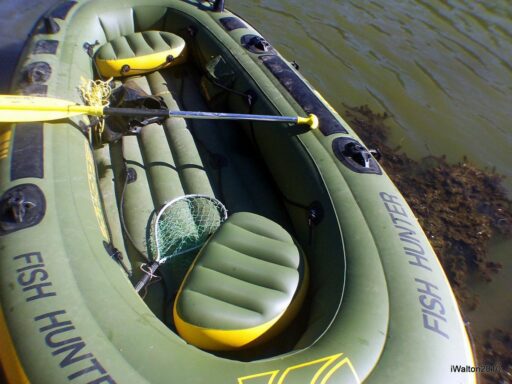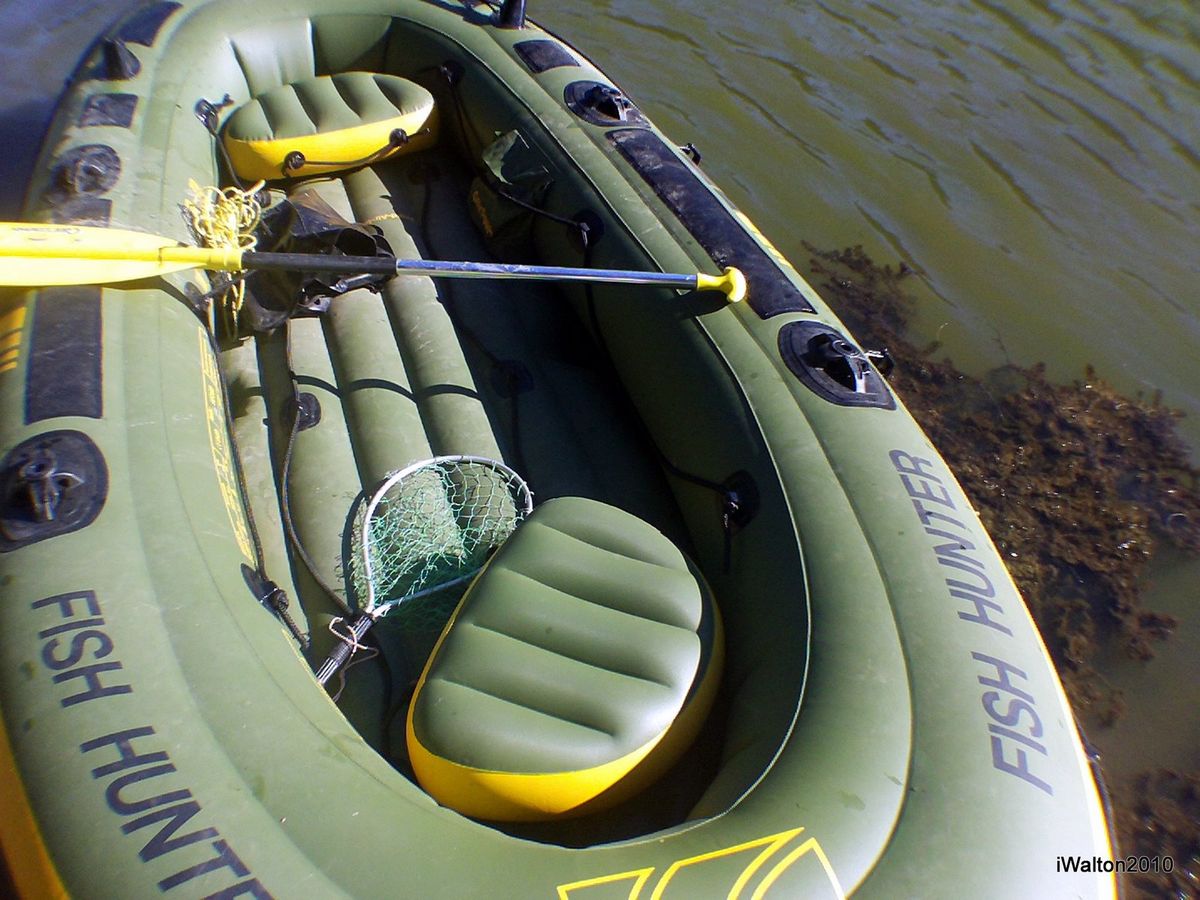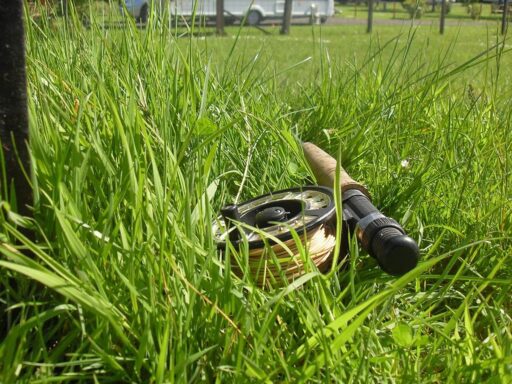Embarking on the quest for the perfect all-around bass fishing rod can be as challenging as reeling in the most elusive trophy bass. This ultimate guide is tailored to help anglers of all levels, from novices to seasoned pros, navigate the myriad of options available. We’ll delve into the nuances of rod power and action, explore top rod and reel combos for specific locations like Johns Lake, and even touch on the art of fly fishing for bass. With expert recommendations, seasonal strategies, and maintenance tips, you’ll be equipped to select a rod that not only suits your style but also maximizes your catch.
Key Takeaways
- Medium to medium-heavy rods with moderate-fast to fast action are ideal for versatile bass fishing techniques and lure management.
- Spinning reel setups are favored for their lightweight design and ease of use, making them a top choice for freshwater bass fishing at Johns Lake.
- A 7-weight fly rod with moderate-fast to fast action is recommended for its power and accuracy in bass fly fishing scenarios.
- Seasonal strategies and adapting gear to specific environments, like cold-water conditions, can significantly improve bass fishing success.
- Investing in high-quality rods with lifetime warranties, such as the Douglas Fly Rod series, ensures long-term performance and satisfaction.
Understanding Rod Power and Action for Bass Fishing

The Importance of Rod Power: Medium vs. Medium-Heavy
When it comes to bass fishing, the power of the rod you choose can make a significant difference in your experience and success. Medium-power rods are versatile and suitable for a range of lures and techniques, but when you need a bit more backbone to handle larger lures or to pull bass out of heavy cover, a medium-heavy rod becomes invaluable.
Medium-heavy rods blend power and flexibility, making them adaptable to a variety of fishing conditions. They offer enough backbone to manage larger lure weights, yet still maintain the sensitivity needed for detecting subtle bites. This balance is particularly beneficial at places like Johns Lake, where the fishing conditions can vary greatly with the seasons.
Choosing the right rod power is not just about the weight of the lure or the size of the fish; it’s about the overall feel and control during the cast and retrieve.
Here’s a quick comparison to help you decide between medium and medium-heavy rods:
- Medium Power Rods: Ideal for lighter lures and finesse techniques.
- Medium-Heavy Rods: Better for larger lures and when fishing in heavy cover.
Remember, the right choice depends on the specific conditions and the fishing techniques you plan to use.
Action Explained: Moderate-Fast to Fast-Action Rods
When selecting a bass fishing rod, the action is a critical factor that influences your casting and the lure’s behavior in the water. Moderate-fast to fast-action rods are preferred for their versatility in various fishing scenarios. These rods bend primarily in the top half, providing a good balance between casting distance and sensitivity.
- Moderate-fast action rods offer a blend of power and flexibility, making them suitable for a range of lures and techniques.
- Fast-action rods are more rigid in the lower section, allowing for quicker hook sets and better control when fighting fish.
Choose a versatile fishing rod with moderate action for ideal sensitivity and arc. Portable rods offer flexibility and lightweight benefits. Consider construction material and rod action for best fishing experience.
It’s important to match the rod action to the type of lure and fishing technique you plan to use. For instance, a fast-action rod is excellent for single-hook lures where a quick hook set is crucial, while moderate-fast action rods can be more forgiving with treble-hooked lures.
Matching Rod Power and Action to Bass Fishing Techniques
Selecting the right rod power and action is crucial for optimizing your bass fishing techniques. A medium-heavy rod is often the go-to choice for its versatility in handling various lure weights and fishing conditions. Paired with a fast-action tip, it provides the sensitivity needed for detecting bites and the backbone for solid hooksets.
- Medium-power rods are suitable for lighter lures and finesse techniques.
- Medium-heavy rods excel with heavier lures and power fishing methods.
- Fast-action rods are ideal for quick, precise casts and work well with single-hook lures.
Remember, the goal is to match your rod to the fishing technique to maximize your effectiveness on the water.
When fishing at Johns Lake, consider the seasonal strategies that might affect your choice of gear. For example, colder water temperatures in the winter might require a different approach compared to the warmer summer months. Adjusting your rod selection to the season can make a significant difference in your catch rate.
The Best Rod and Reel Combos for Johns Lake

Top Spinning Reel Picks for Lightweight and Easy Use
When selecting a spinning reel for bass fishing, lightweight and ease of use are paramount. The best spinning reels enhance the angler’s control and precision, allowing for an effortless fishing experience. Below is a list of top spinning reel picks that stand out in the market for their performance and user-friendly features.
- Abu Garcia Zenon 30: Best Overall for its balance of weight, durability, and smooth operation.
- Shimano Vanford VFC4000XGF: Best for Long Casts with its high gear ratio and precision casting capabilities.
- 13 Kalon C 6.2-3.0: Known as the Best Workhorse for its robust build and reliability under pressure.
- Daiwa Laguna LT 2500: Best Budget option that doesn’t compromise on quality or performance.
It’s essential to choose a reel that complements your rod and fishing style. A well-matched setup can significantly improve your casting accuracy and the overall enjoyment of your fishing trips.
Remember, the ideal reel should not only be lightweight but also possess a strong drag system and a comfortable grip. This ensures that you can handle long fishing sessions and fight big bass with confidence.
Expert Recommendations for Durable Rod and Reel Setups
When it comes to bass fishing at Johns Lake, durability and reliability are key factors in choosing the right rod and reel setup. A medium-heavy spinning or baitcasting rod paired with a reel that can handle a 15-20 lb test line is often recommended for the best balance of power and versatility. This combination allows anglers to adapt to various lure weights and fishing conditions, ensuring a successful outing.
- Spinning Reels: Ideal for their lightweight and ease of use, especially for beginners.
- Baitcasting Reels: Offer greater control and accuracy for experienced anglers.
- Rod Power: Medium-heavy rods are versatile for different lure weights.
- Line Test: 15-20 lb test line provides strength for larger bass.
With the right rod and reel setup, you’ll be well on your way to reeling in those trophy bass and making lasting memories at Johns Lake.
It’s important to note that investing in quality gear can make a significant difference in your fishing experience. The $300 price point represents a huge jump up in quality and sensitivity, making it a wise choice for those looking to enhance their performance and enjoyment on the water.
Seasonal Strategies: Adapting Your Gear for Johns Lake
Adapting your gear to the changing seasons at Johns Lake is crucial for bass fishing success. Spring and summer bring distinct challenges and opportunities that require different approaches to tackle the bass effectively.
During the spring spawn, bass are particularly active as they guard their nests. This is an excellent time to use lures that mimic natural prey, such as soft plastics or spinnerbaits. As the water warms up, topwater lures can yield impressive results, especially in the early mornings or late evenings when bass are hunting for food on the surface.
In summer, the bass seek cooler, oxygen-rich waters. Slower presentations become more effective; consider using plastic worms with a "Crank-and-Glide" retrieve or topwater lures like hula poppers to entice those elusive bass.
Here’s a quick reference for seasonal lure selection:
- Spring: Soft plastics, spinnerbaits, jerkbaits
- Summer: Plastic worms, topwater lures (hula poppers, spooks)
Remember, the right gear can make all the difference. Keep your tackle box versatile and ready for the seasonal shifts at Johns Lake.
Fly Fishing for Bass: Gear, Techniques, and Flies
Choosing the Right Fly Rod: A Guide to Weight and Action
Selecting the ideal fly rod for bass fishing hinges on understanding the balance between rod weight and action. A 7 weight fly rod with moderate-fast to fast action is the best choice for versatile bass fishing. This setup provides the necessary power for casting large streamers or smaller flies over long distances with precision.
- Moderate-fast to Fast-action: Essential for quick, responsive casts.
- Powerful: To handle heavier setups like sink tips or weighted flies.
- Accurate: For precise fly placement, crucial in bass fishing.
While 7 weight rods are most common, don’t overlook the utility of 6 or 8 weight rods, especially when targeting smaller largemouth bass on topwater. Lighter 4 or 5 weight rods can also be effective in these scenarios.
Remember, the goal is to have a rod that can deliver heavy setups accurately and efficiently, and also provide the strength to set the hook firmly. When you find the right combination of weight and action, you’ll experience a noticeable improvement in your bass fishing endeavors.
Essential Fly Fishing Techniques for Bass Anglers
Mastering the art of fly fishing for bass requires a blend of skill, knowledge, and the right techniques. Understanding the behavior of bass and adapting your approach is crucial for a successful catch. Start by targeting structures where bass are known to hold, such as boulders, sunken logs, and weed beds. These areas provide shelter and feeding grounds for bass, making them prime spots for anglers.
When it comes to giving life to your fly, a jigging motion can be particularly effective. Bass are often enticed by the erratic movement of a fly that mimics the fluttering of prey. Therefore, incorporating a strip-and-pause technique can significantly increase your chances of a strike. During times when the topwater bite is less active, consider using sink tips to get your fly into the deeper zones where bass may be lurking.
It’s essential to select flies that resemble the natural diet of bass in your fishing environment. This increases the likelihood of bass mistaking your fly for their typical prey, leading to more bites.
Lastly, always be prepared to adjust your tactics based on the season, water conditions, and bass behavior. This adaptability will not only enhance your fly fishing experience but also maximize your catch rate.
Top 5 Flies for Bass Fishing: Expert Picks
When it comes to fly fishing for bass, the choice of flies can make a significant difference in your success rate. Douglas Pro Tim Flagler recommends a selection that has proven effective across various conditions. Here’s a list of his top picks:
- White Wooly Bugger
- Clouser Minnow
- Barr’s Meat Whistle
- Conehead Bunny Muddler
- Classic Popper (topwater)
Each of these flies serves a unique purpose and mimics the natural diet of bass, which is crucial for enticing these aggressive fish. The Classic Popper, for example, is excellent for topwater action, creating a disturbance that bass find irresistible.
Remember, giving your fly action is key. A jigging motion often triggers the predatory instincts of bass, so be sure to strip and pause your fly to mimic the fluttering and jigging motion that drives bass to strike.
When selecting your fly fishing gear, consider the best fly rod for bass—a moderate-fast to fast-action 7 weight rod. This type of rod offers the power and accuracy needed for both short and long casts, whether you’re using large streamers or smaller flies. Targeting structure is also essential, as bass tend to hold near features like boulders, logs, and weed beds.
Maximizing Your Catch: Essential Tips and Tricks

Advanced Casting Tips for Greater Accuracy and Distance
Achieving greater accuracy and distance in casting is essential for successful bass fishing. Mastering the technique of sidearm casting can significantly enhance your precision, especially when targeting spots close to the boat. This method allows for low, controlled casts that can slip under foliage and into tight spaces where bass often hide.
When selecting a rod for distance, consider the balance of finesse and power. A rod like the Douglas Outdoors XMATRIX DXC 715F is praised for its ability to cast lighter jigs a long distance while maintaining the power needed for a confident hook set at the end of a 200-foot cast. The fast action and deflection point of the rod are crucial for achieving both distance and accuracy.
For those looking to optimize their casting in various conditions, it’s important to adjust your gear accordingly. A heavier rod may be necessary for larger baits and windy conditions, while a lighter setup is ideal for calm days and smaller lures.
Remember, the right combination of rod power and action can make a significant difference in your casting capabilities. Experiment with different setups to find what works best for your style and the current fishing conditions.
How to Select the Best Lures for Different Bass Behaviors
Selecting the right lure is crucial for bass fishing success. Understanding the behavior of bass and matching your lure to their preferences can significantly increase your catch rate. During the spring spawn at Johns Lake, for example, bass are known to respond well to certain types of lures. Here’s a quick guide to what works best in different seasons:
- Spring: Crawfish-colored crankbaits, spinnerbaits, jigs, stickworms, and walking topwater plugs.
- Summer: Hula poppers, spooks, and Sammy or gunfish-style lures for topwater action.
Buzzbaits are particularly effective in shallow waters during the pre-spawn period. The right lure selection, combined with proper technique, can lead to trophy catches.
In addition to seasonal preferences, consider the structure and depth where bass are holding. Use sink tips to get your fly down to the fish’s zone, and mimic their natural diet with your lure choices. Remember, the BassForce® app can provide precise lure recommendations from professional anglers tailored to your fishing conditions. Lastly, don’t overlook the effectiveness of plastic worms and lipless crankbaits, which have a proven track record at Johns Lake.
Maintenance and Care for Long-Lasting Fishing Rod Performance
Ensuring your bass fishing rod remains in top condition is crucial for both performance and longevity. Regular maintenance can prevent common issues and extend the life of your rod, allowing you to enjoy many successful fishing trips. Here are some essential maintenance tips:
- Clean your rod with fresh water after each use, especially if you’ve been fishing in saltwater.
- Inspect your rod for any signs of wear or damage before and after each fishing trip.
- Store your rod in a cool, dry place away from direct sunlight to prevent warping and deterioration.
Proper storage is as important as regular cleaning. A quality rod storage solution not only organizes your gear but also protects it from environmental damage and accidental breakage.
When it comes to repairs, don’t be too hasty to discard a damaged rod. Often, simple fixes can restore functionality, saving you the expense of a replacement. If you’re unsure about how to proceed with a repair, consult with a professional or refer to manufacturer guidelines.
Lifetime Gear: Exploring Douglas Fly Rods for Bass

Douglas Fly Rod Series: Finding the Perfect Match for Bass
When selecting the perfect fly rod for bass fishing, Douglas Outdoors offers an array of options that cater to the discerning angler. The best fly rod for bass is typically a moderate-fast to fast-action 7 weight, which provides the versatility needed for various casting distances and fly sizes. Douglas’s lineup includes the SKY G, DXF, LRS, and ERA series, each designed with specific angling scenarios in mind.
Douglas rods come with the assurance of a lifetime warranty, a testament to their quality and the company’s commitment to their customers.
For those looking to make an informed decision, here’s a quick comparison of the popular series:
- SKY G: Renowned for its precision and power, suitable for both short and long casts.
- DXF: Offers a balance of strength and sensitivity, ideal for a range of bass fishing techniques.
- LRS: Known for its ruggedness, perfect for anglers who demand durability.
- ERA: A great entry-level option that doesn’t compromise on performance.
Visiting a local dealer or consulting online resources can provide hands-on experience and additional insights into selecting the right Douglas rod for your bass fishing adventures. Remember, the right rod can significantly enhance your fishing experience and success on the water.
The Lifetime Warranty Advantage: Investing in Quality
Investing in a fishing rod with a lifetime warranty is not just about ensuring a long-lasting product; it’s about the peace of mind that comes with knowing your gear is protected. Douglas Fly Rods offer this advantage, allowing anglers to focus on the joy of fishing without the worry of equipment failure.
When you choose a rod backed by a lifetime warranty, you’re also investing in quality. Manufacturers who provide such warranties are confident in their craftsmanship and materials. This confidence translates into rods that can withstand the rigors of frequent use and the harsh conditions often encountered while bass fishing.
- Confidence in quality and durability
- Assurance of repair or replacement
- Long-term cost savings
By selecting a rod with a lifetime warranty, you’re not only securing a reliable fishing companion but also ensuring that your investment is protected for years to come.
Real-World Reviews: Anglers’ Experiences with Douglas Rods
Anglers who have chosen Douglas rods for their bass fishing adventures often share their experiences online, highlighting the performance and quality of these rods. The SKY G 9′ 7wt and 8wt models, for instance, are frequently mentioned for their exceptional balance and sensitivity, which are crucial for detecting subtle bites and executing precise casts.
The lifetime warranty offered by Douglas is a testament to the confidence they have in their products, and it provides anglers with peace of mind knowing their investment is protected.
Feedback from users of the DXF 9′ 7wt and 8wt and LRS 9′ 7wt and 8wt series also underscores the versatility of these rods across various fishing conditions. Whether it’s the responsiveness needed for working a bladed jig or the strength required for a solid hook set, Douglas rods are praised for their adaptability.
Here’s a quick look at some of the top Douglas rods for bass fishing, as reviewed by anglers:
- SKY G 9′ 7wt and 8wt
- DXF 9′ 7wt and 8wt
- LRS 9′ 7wt and 8wt
- ERA 9′ 8wt
These reviews, collected from various sources such as fishing forums, blogs, and online retailers, provide valuable insights for anyone considering a Douglas rod for their next fishing trip.
Conclusion
In the quest for the perfect all-around bass fishing rod, we’ve explored a myriad of factors that contribute to an exceptional angling experience. From the construction and durability of the rod and reel to the specific requirements for different fishing environments, techniques, and seasonal strategies, it’s clear that the right equipment can significantly enhance your success on the water. Whether you’re casting a White Wooly Bugger with a Douglas fly rod at Johns Lake or choosing the ideal lure for Florida’s trophy bass, remember that the best rod is one that feels like an extension of your own arm. It should offer the right balance of power, action, and sensitivity to suit your personal style and the conditions you face. As you reflect on the insights shared by experts and seasoned anglers, we hope this guide has equipped you with the knowledge to make an informed decision. Now, with your ideal bass fishing rod in hand, you’re ready to create unforgettable memories and maybe even land the catch of a lifetime.
Frequently Asked Questions
What are the key features to look for in a bass fishing rod for Johns Lake?
When choosing a rod for Johns Lake, look for a medium or medium-heavy power rod with moderate-fast to fast action. This combination is ideal for managing different lure weights and techniques, ensuring durability and high performance.
Why are spinning reels recommended for freshwater bass fishing?
Spinning reels are recommended for their lightweight and effortless use, which makes them suitable for various freshwater bass fishing techniques, especially when precision and ease of handling are important.
What makes a fly rod suitable for bass fishing?
A suitable fly rod for bass fishing is generally a 7 weight, moderate-fast to fast-action rod. It should be powerful and accurate, capable of making both short and long casts with a variety of flies.
Can you recommend some effective flies for bass fishing?
Top flies for bass fishing include the White Wooly Bugger, Clouser Minnow, Barr’s Meat Whistle, Conehead Bunny Muddler, and the Classic Popper for topwater action.
What are the benefits of choosing a Douglas fly rod for bass fishing?
Douglas fly rods are designed with bass fishing in mind, offering a range of options like the SKY G, DXF, LRS, and ERA series. They come with a lifetime warranty, ensuring long-term quality and performance.
What seasonal strategies should bass anglers use at Johns Lake?
Seasonal strategies at Johns Lake involve adapting gear to changing conditions, such as water temperature and bass behavior. Anglers should be prepared to switch lures and techniques to match the current season for optimal results.





